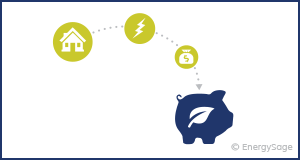There is an enormous cluster of partners that offer types of assistance through power age, transmission, dissemination, and showcasing for modern, business, public, and private clients in the US. Likewise, Energy Rates in Waco incorporates numerous public organizations that direct the area. In 1996, there were 3,195 electric utilities in the US, of which less than 1,000 participated in the power age. This leaves countless generally more modest utilities connected exclusively in power conveyance. There were likewise 65 power advertisers. Of all utilities, 2,020 were openly claimed, 932 were rustic electric cooperatives, and 243 were financial backer-possessed utilities. The power transmission network is constrained by Autonomous Framework Administrators or Territorial Transmission Associations, which are not-for-benefit associations that are obliged to give unpredictable admittance to different providers to advance contest.
The four previously mentioned market sections of the U.S. power area are managed by various public foundations for certain useful covers: The central government sets general arrangements through the Division of Energy, ecological strategy through the Natural Security Organization, and buyer insurance strategy through the Administrative Exchange Commission. The security of thermal energy stations is directed by the Atomic Administrative Commission. The monetary guideline of the dissemination fragment is a state liability, for the most part, helped out through Open Utilities Commissions; the between-state transmission portion is directed by the national government through the Bureaucratic Energy Administrative Commission.
Power utilization
Power utilization information in this part depends on information mined from US DOE Energy Data Organization/Electric Power Yearly 2018 documents In 2018 the all-out US utilization of power was 4,222.5 terawatt-hours (TWh). Utilization was up from 2017, by 131.9 TWh or +3.2%. This is separated as:
- Private clients straightforwardly consumed 1,469.09 TWh or 34.74% of the aggregate. This was up 90.5 TWh from 2017. A typical private client utilized 914 kWh/month and with the typical US private expense of $0.1287/kWh the typical month-to-month electrical bill would be $117.67, up marginally from 2017.
- Business clients straightforwardly consumed 1,381.76 TWh or 32.72% of the aggregate. This was more than in 2017 with north of 246 thousand new clients. A typical business client utilized 6,189 kWh/month and with the typical US business electric expense of $0.1067/kWh the typical month-to-month electrical bill would be $660.36.
- Modern clients straightforwardly consumed 1000.7 TWh or 23.70% of the aggregate. This was somewhat more than in 2017. Transportation clients (83) straightforwardly consumed 7.665 TWh or 0.18% of the aggregate. This was somewhat higher than in 2017.
- Framework misfortune all through the all-out electrical matrix foundation by direct utilization of the providers and for transmission and other framework misfortunes and unaccounted-for loads adds up to 363.3 TWh or 8.6% of the all-out which is somewhere around 0.4% from 2017. Subsequently, the US electric dispersion framework is 91.4% effective and proficiency has worked somewhat throughout the past year.
Utilization per individual

Power utilization per individual (per capita) depends on information mined from US DOE Energy Data Organization/Electric Power Yearly 2020 documents Populace information is from Socioeconomics of the US. Per capita utilization in 2020 is 12316 kWh. This is down 456 kWh from 2019 and down 8.2% from 10 years prior and down 10.9% from its top in 2007. The accompanying table shows the yearly US per capita utilization by fuel source from 1999 to 2020. The accompanying table utilized the primary segment from the Socioeconomics of the Unified States#Vital measurements table for populace and age from Electric Power Yearly. This intends that “utilization” incorporates transmission misfortunes, and so because the qualities in the table were completely determined from table ES1. Outline Measurements for the US. Likewise beginning around 2016, the limited-scale sun-powered gauge is remembered for its sun-based commitment.

